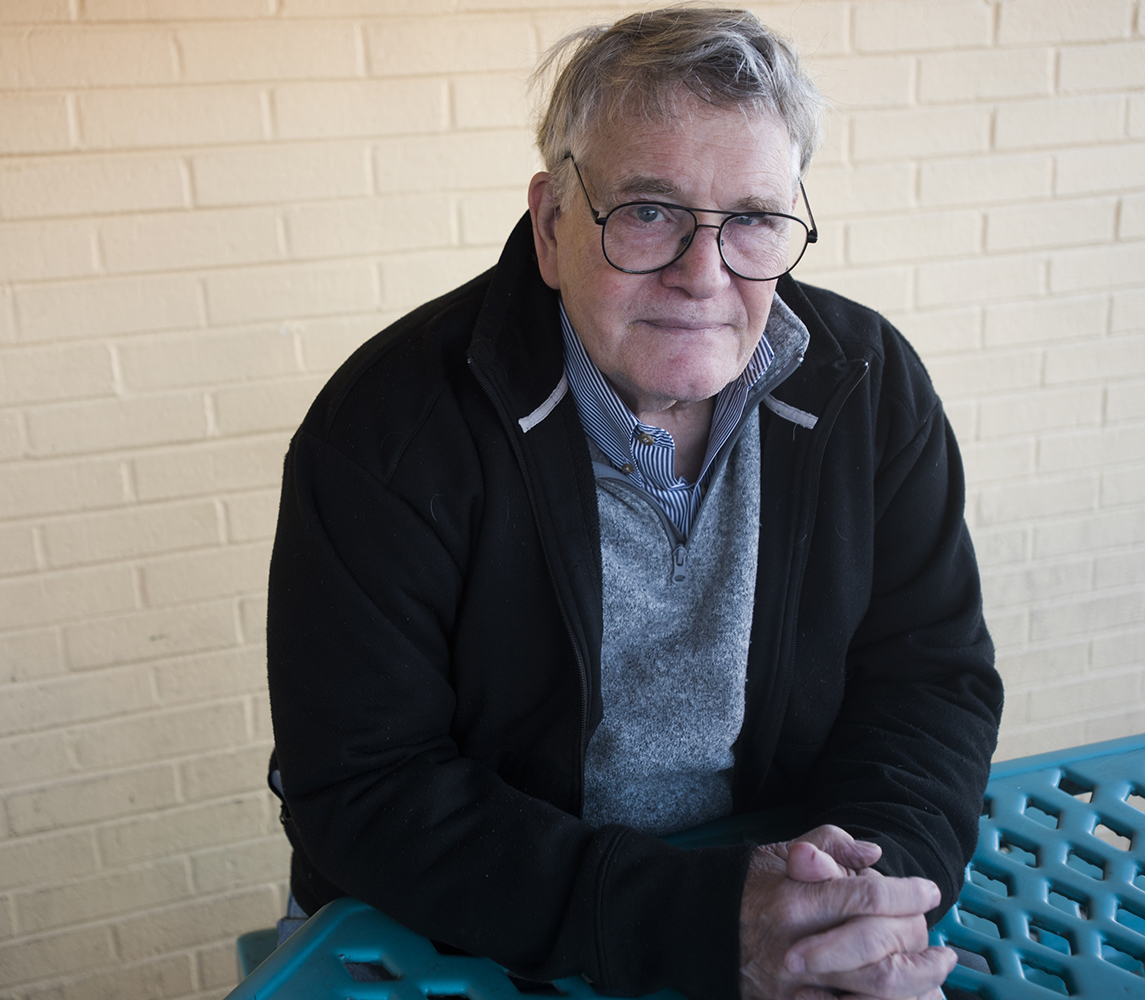Chicago is an urban carousel. And Jeff Lowenthal has had a front-row seat. In his early twenties, he took pictures of future Nobel Prize-winner Saul Bellow in Hyde Park. On a freelance photo assignment for Newsweek magazine in 1976, Lowenthal hung out at the Wicker Park home of author Nelson Algren. They talked about the poetry of boxing and the price of coffee filters. In December 1962 Lowenthal was taking pictures of Lenny Bruce during the comedian’s residency when he was arrested on obscenity charges at the Gate of Horn nightclub on the near north side.
Lowenthal enjoyed a late-in-life renaissance with the 2022 photo book “Fleetwood Mac in Chicago (The Legendary Chess Blues Session)” which features rare images he captured during a January 1969 session at Ter-Mar Studios in Chicago. The gang is all here: Buddy Guy, Otis Spann, and early Fleetwood Mac members Mick Fleetwood and John McVie.
Lowenthal is humble about all that he has seen, the worlds he has shared.
“I tell people that my life, and maybe everybody’s life, is related to pool balls on a table,” he told me in 2023. “You set them up and you hit them. They go in all different directions. If you’re an expert pool player maybe you know where they’re going to go. Maybe you don’t.” This gentleman is never behind the eight ball.
Lowenthal was born in Chicago on April 27, 1938, and raised in a brick six-flat at 657 West Buena on the North Side. His mother, Mildred, was a homemaker who had a master’s degree in piano from the Chicago Musical College. His father Edward, was a sales manager for a chemical company.
The young Lowenthal was a jazz fan. In 1959 he hosted a Saturday afternoon swing jazz show on WNIB-FM 97.1 (now WDRV.) One day he received a postcard from a listener hipping him to the great Franz Jackson’s band at the Red Arrow nightclub in south suburban Stickney. Lowenthal took a bus from Chicago to Stickney to see Jackson, the clarinetist-saxophonist who enlisted Little Brother Montgomery as his boogie-woogie piano player. After the gig, Jackson’s trombonist Al Wynn (born 1907!) drove Lowenthal back to Chicago in his Cadillac.
The carousel ride began.
In the summer of 1963, Lowenthal made pictures of Duke Ellington during the recording of the bandleader’s “My People” sessions at Universal Studios in Chicago. “My People” opened as part of the Century of Negro Progress Exposition in Chicago. Ellington wrote the music and words. The soundtrack was recorded in three days at Universal.
Lowenthal is a gentle soul with a sharing spirit. He always wanted to mentor other photographers. So in 1965, he wrote the 128-page book “Stage and Theater Photography.” The book includes a chapter titled “Portrait of the Artist as a Human Being” where Lowenthal interviewed jazz pianist Oscar Peterson. Lowenthal told his readers that the music takes precedence over the photography.
Lowenthal was a Newsweek freelancer for ten years before serving in the U.S. Navy between 1964 and 1968. He became a Newsweek staffer in 1975 and remained until 1985. On a Newsweek assignment in 1976, Lowenthal shot Sissy Spacek in her hometown of Quitman, Texas after she starred in the film “Carrie.” He has some of the earliest pictures of jazz trumpeter Ira Sullivan, circa 1959. While freelancing for Chess Records Lowenthal shot the acclaimed Chicago soul group The Dells and rock avatar Chuck Berry.
This is historical content.
“What happens to my archive is troublesome,” Lowenthal said. “Both my kids are excellent photographers who have no interest in the business of photography and certainly not the scanning of negatives. There’s not going to be any marketability unless they are filed, scanned and ready to go to people who are doing historical things on artists or whatever. Scanning is a very time-consuming process. And, preparing stuff for this website has forced me to go through the 40 or so hard drives and I’ve found a few I had forgotten. A lot of my work never got printed.
“There’s a picture I took at a Black Panther demonstration around 1968 and had three prints made by Rich Mather. I sold one to Harriet Choice (the esteemed Chicago jazz critic who died in 2023) and she willed it to a nephew who always admired it when visiting her.” Lowenthal is on the hunt for that negative that depicts an American flag next to a young woman hoisted on the shoulders of a young man. The beautiful photograph depicts the carousel of change. Lowenthal sighed and explained, “My negatives are divided in banker’s boxes in two ways: one is ‘musicians’ and the other is basically ‘everything else.’ It’s 60 years of photography. There are hundreds of rolls of film that mostly remain with Newsweek. But it’s hard for me to say. How many 35 mm negatives can fit in a banker’s box?”
By Dave Hoekstra
